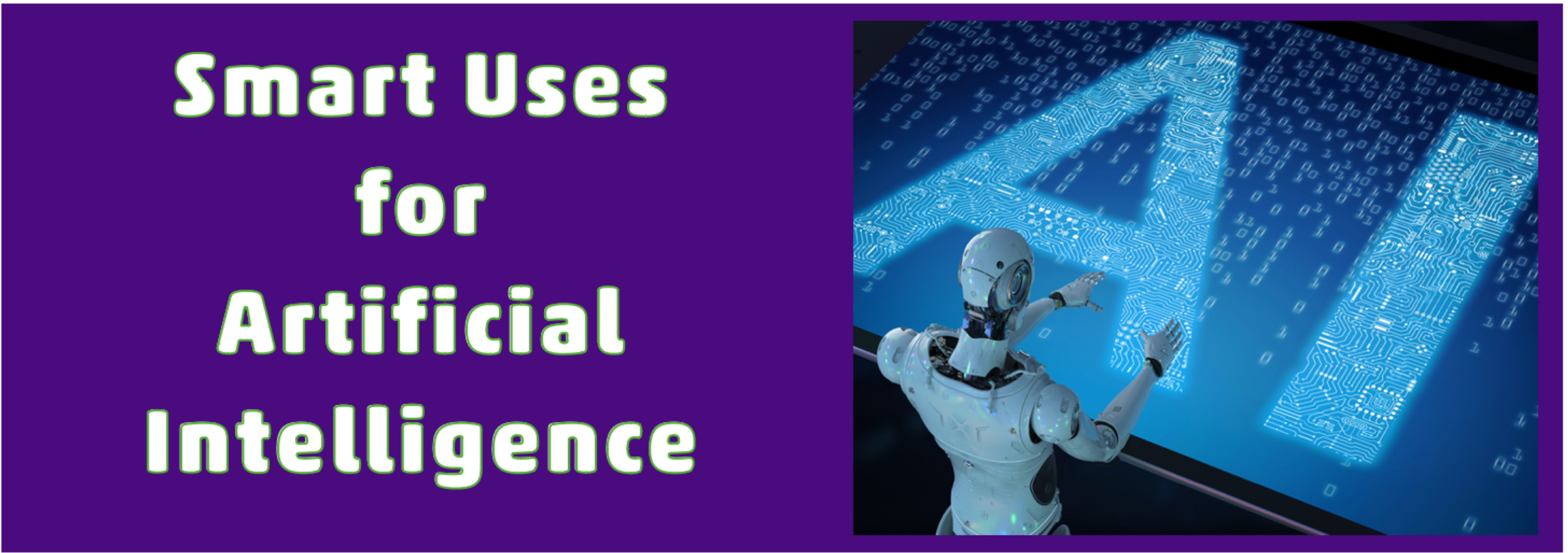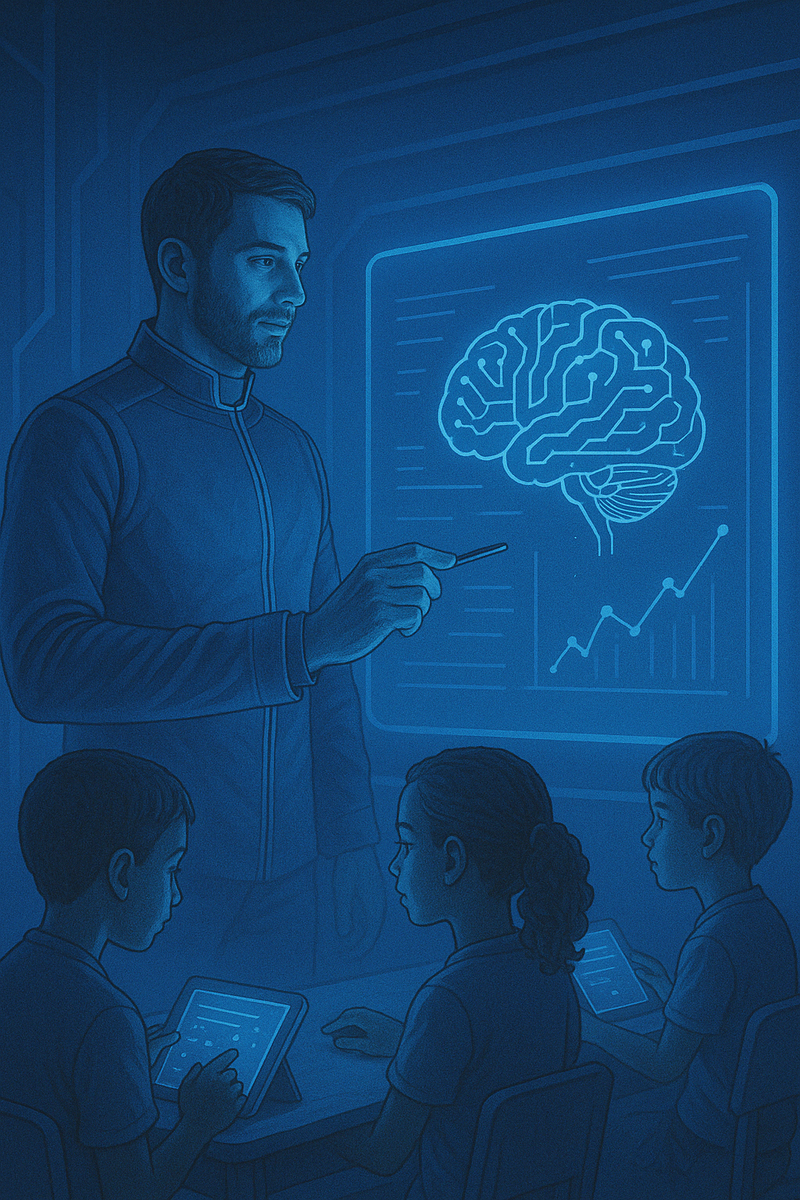The Technology Page:

How Should We Be Teaching AI in Primary Education?
From Play to Purpose: How Primary Schools Can Teach AI with Confidence
Teaching AI in primary schools might sound daunting, but it doesn’t have to be. You don’t need advanced coding knowledge, expensive equipment, or futuristic robotics kits. Instead, you need a foundation in inquiry learning, storytelling, and ethical discussion—skills teachers already use daily. This article explores pedagogical strategies to make AI accessible, engaging, and relevant to tamariki.
Principles for Teaching AI in the Primary Years
The key to effective AI education in primary schools is contextualisation, simplification, and connection. Young learners are naturally curious about how the world works. The goal is not to teach technology in isolation, but to embed AI learning into familiar subjects through authentic experiences.
1. Begin with Unplugged Activities
Unplugged learning—teaching concepts without the use of devices—is an ideal starting point. These activities are hands-on, tactile, and promote deep conceptual understanding.
Examples:
- “Human Algorithms”: Students write step-by-step instructions to help a friend make a jam sandwich or navigate a maze, introducing the concept of precise programming.
- “Pattern Spotting”: Use LEGO, beads, or natural materials to explore how AI finds patterns in data.
- “Classifying Creatures”: Have students group animals based on features (fur, number of legs, habitat), modelling how machines sort and learn.
Research Insight: Studies by the CS Unplugged project (Bell et al., 2010) demonstrate that unplugged approaches enhance understanding of computational thinking while being developmentally appropriate and inclusive.
2. Integrate AI Across the Curriculum
Rather than treating AI as an isolated subject, it should be infused across learning areas.
Literacy:
- Write narratives featuring AI characters—explore empathy, ethics, and the boundaries of human interaction.
- Read news articles or stories about AI inventions and debate their impact.
Math:
- Use data sets to explore sorting, graphing, and predictions—“What pattern comes next?”
- Explore probability and logic, foundational to machine learning.
Science and Inquiry:
- Investigate how sensors mimic human senses.
- Ask “Can AI think like a bird?” and design experiments around animal recognition tools.
Example:
Students can use Google’s “Teachable Machine” to train a simple AI model to distinguish native birds by image or sound. This ties AI learning directly to New Zealand’s biodiversity and local curriculum goals.
3. Use Simple, Child-Friendly AI Tools
There’s a growing ecosystem of AI tools that are safe, age-appropriate, and fun. These tools let students play the role of “machine trainers,” helping them understand how AI works.
Recommended Tools:
- Teachable Machine (Google): Train a model using photos, sounds, or poses.
- Scratch (MIT): Use blocks to build rule-based bots and simulate basic decision-making.
- Quick, Draw!: An AI guesses what you’re drawing—students see how it learns from past data.
Research Insight:
When students train AI models themselves, they gain a concrete understanding of how inputs shape outcomes (Lee et al., 2021). This builds critical awareness of bias, data quality, and fairness.
4. Embed Values and Ethics in Learning
Teaching AI without teaching values is a risk. Ethical discussions should be part of every activity.
Conversation Starters:
- Should a robot decide who gets help first in an emergency?
- Is it fair if an app only works for some accents?
- Who owns the data when I train a machine with my face?
Connect these conversations to our school values of manaakitanga, whakapono, and whanaungatanga.
Mātauranga Māori Perspective:
Use pūrākau (traditional stories) to explore themes of balance, knowledge, and responsibility. These cultural lenses provide rich ethical frameworks that complement and challenge Western narratives about AI.
5. Promote Creativity and Problem Solving
AI learning shouldn’t be dry or technical. It should be driven by questions like:
- What problem can we solve with a helpful machine?
- How would we teach it to be fair?
- What would it look, sound, and behave like?
Encourage design thinking:
- Identify a need
- Design an AI tool (paper prototype or digital mock-up)
- Present and critique ideas
6. Support Teacher Confidence Through Professional Learning
Many kaiako feel uncertain about AI. The solution is not expert-only workshops—it’s ongoing, hands-on, collaborative learning.
Effective PLD Models:
- Micro-workshops exploring one tool at a time
- Co-teaching with digital learning specialists
- Staff-led “try it and reflect” cycles
- Sharing wins and flops at team meetings
Suggested Resource Hubs:
- AI4K12.org (U.S.-based, but adaptable)
- Digital Technologies Hub (Australia)
- CS Unplugged (NZ) – free resources for computational thinking
Equity Tip:
To avoid widening digital divides, professional learning should prioritise low-decile and high-diversity schools.
Conclusion: Teaching AI is Teaching Agency
The aim of AI education in primary school isn’t to produce engineers—it’s to empower children with the knowledge and values to shape their world.
By making AI visible, playful, and culturally grounded, we equip students with the tools to question what machines do—and, more importantly, what they should do.
References
- Bell, T., Witten, I. H., & Fellows, M. (2010). Computer Science Unplugged: An enrichment and extension programme for primary-aged students. NZ: Canterbury University.
- Lee, I., Ali, S., & Yin, Y. (2021). Developing AI Literacy in K–12 Classrooms. ACM Transactions on Computing Education.
- UNESCO (2021). AI and Education: Guidance for Policymakers.
- AI4K12.org. (2023). Five Big Ideas in AI Education.
- CS Unplugged. (2024). https://csunplugged.org
- Ministry of Education, NZ. (2020). Digital Technologies Curriculum Content.

